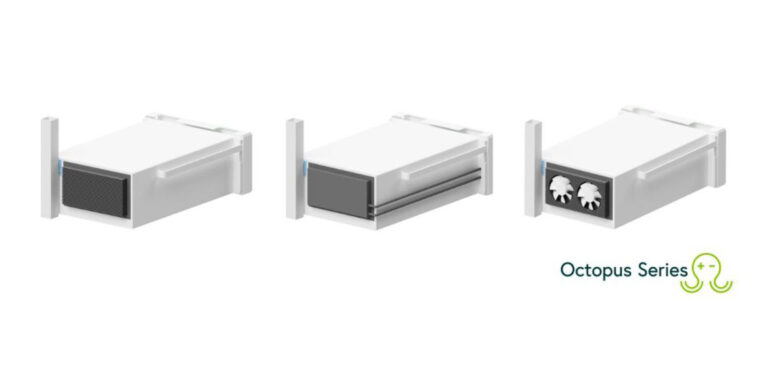Battery manufacturer EST-Floattech has announced the launch of its next-generation, DNV-certified battery management system (BMS) for the marine sector.
The new system, called Octopus, consists of both high-power and high-energy modules, and the lightweight battery solutions can be installed and integrated into a range of different sized vessels. EST-Floattech also gives prospective customers the choice between passive or active cooling, with forced air and liquid cooling to become available.
The high energy NMC batteries have been designed for medium- to large-size vessels, such as tugboats, long-distance ferries or other vessels that sail on electric power for up to eight hours. Furthermore, the system is suitable for ships with large-scale battery installations that require 100kWh up to several MWh. The batteries can also be connected easily in large series.
High-power NMC modules were developed by the company for use by short-distance ferries, for example, that take advantage of opportunity charging. These modules deliver a lot of power in terms of kW, have a limited energy storage but a much shorter charging time. This makes them better suited for point A-to-point B charging and negates the need for expensive and bulky systems being installed on board. The system has multiple safety layers built into its mechanical design and software and as a result meets strict DNV class requirements.
For other applications, on land or sea, where space is not an issue, LFP battery systems are utilized. These systems do not need cobalt or other scarce resources, and therefore benefit from being cost-effective and more sustainable than other options.
The system has been designed to suit a range of needs and budgets, and includes remote monitoring, diagnostics and safety management capabilities.
“We see the market both emerging and growing. Sustainable power solutions are becoming accepted and here and there electrically powered vessels are coming into service,” commented Diederick Stam, manager operations, EST-Floattech.
“As a result, you see more and more differentiation in the applications needed by shipowners and shipbuilders, not only for direct propulsion, but also for equipment, machinery and peak performance and endurance needs. In addition, new types of applications are being thought of as we speak, and we work closely with our clients to get them designed and fully functional.”
Production of the new battery systems is scheduled to begin soon, with systems to become available in 2022.



